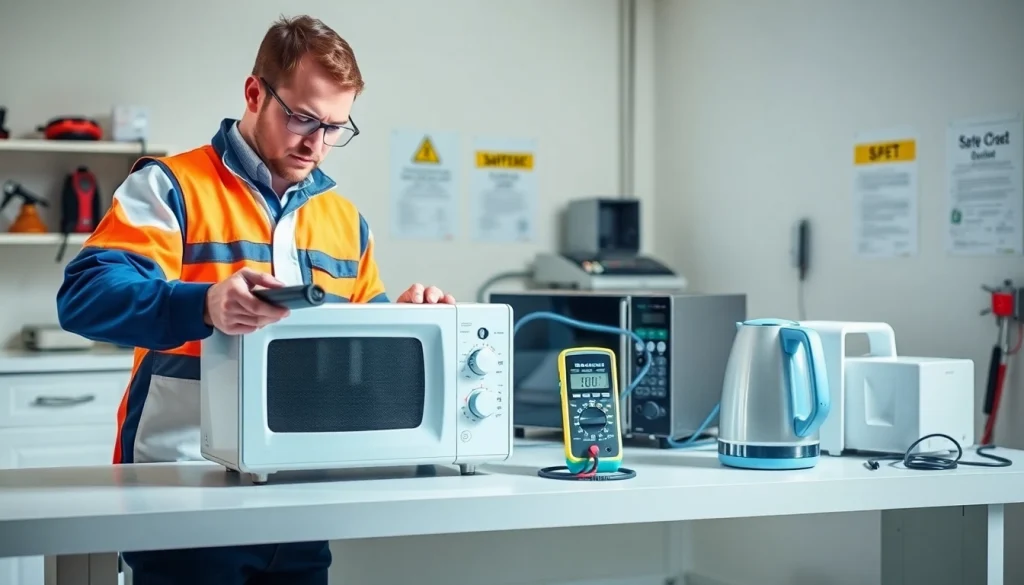Understanding Portable Appliance Testing
Portable Appliance Testing (PAT) is an essential process for ensuring the safety of electrical appliances in both domestic and commercial environments. This method involves routine checks of electrical devices, confirming that they are safe to use and meet regulatory standards. Portable Appliance Testing not only helps in maintaining a safe working environment but also in preventing electrical accidents, which can cause serious injuries or even fatalities.
What is Portable Appliance Testing?
PAT testing refers to the systematic examination of electrical appliances used in homes, offices, and public settings. The process typically includes a visual inspection of the appliance and its power cord, followed by a series of electrical tests designed to assess its safety. This can involve checking the insulation resistance, earth continuity, and other key safety measures.
The Importance of PAT in Electrical Safety
The significance of PAT cannot be overstated. It plays a crucial role in minimizing the risk of electric shocks, fires, and equipment damage. By ensuring that appliances are tested regularly, employers and property owners demonstrate a commitment to safety and compliance. This is particularly vital in workplaces where the use of portable electrical equipment is common, increasing the necessity for stringent safety measures.
Common Myths about PAT Testing
Several misconceptions surround the practice of PAT testing. One common myth is that all electrical appliances must be tested annually; however, the frequency of testing depends on the type of appliance and its environment. Understanding these myths can lead to better compliance and safety practices.
Legal Obligations and Compliance
Understanding PAT Regulations
In many countries, laws governing electrical safety necessitate PAT testing as part of broader safety regulations. In the UK, for instance, the Health and Safety at Work Act and the Electricity at Work Regulations require periodic testing of electrical equipment to ensure safety standards are met. Familiarity with local regulations is crucial for businesses to avoid legal pitfalls.
Who is Responsible for PAT Testing?
The responsibility for PAT testing generally lies with the employer or the person in control of the premises. This includes ensuring that employees have access to safe equipment. Proper recording of testing results is necessary to comply with legal standards and to provide proof of diligence in safety measures.
Consequences of Neglecting PAT Compliance
Failure to maintain proper PAT testing can have severe consequences, including legal action, financial penalties, and increased liability in the event of an accident. Businesses may also face significant reputational damage, impacting their ability to attract clients or retain employees.
How Portable Appliance Testing Works
Visual Inspection Overview
The first step of PAT testing is often a detailed visual inspection of appliances. This includes checking for signs of damage such as frayed cables, loose connections, and any other visible defects. During this inspection, testers may also evaluate the appliance’s overall condition and usage history to determine potential risks.
Electrical Testing Procedures
Following the visual check, various electrical tests are conducted to assess the appliance’s safety. Key procedures include measuring insulation resistance, continuity testing, and earth leakage testing using a calibrated portable appliance tester. Each test is crucial for identifying potential electrical faults that could lead to accidents.
Interpreting Test Results
After testing, results must be carefully interpreted. Appliances that pass inspection can be marked as safe to use, while those failing must be repaired or replaced. Understanding how to document and communicate these results is vital for compliance and safety awareness among users.
Best Practices for Conducting PAT
Choosing the Right Equipment for PAT
Selecting appropriate testing equipment is critical for effective PAT. Depending on the type of appliances being tested, different testers may be required. Features such as data logging, automatic testing sequences, and user-friendly interfaces should be considered to ensure accurate results and efficient operation.
Scheduling Regular PAT Tests
Establishing a routine schedule for PAT testing is essential for maintaining safety standards. Factors like the environment in which appliances are used, the frequency of use, and the type of appliances dictate how often testing should occur. High-risk environments may require more frequent testing compared to low-risk areas.
Documenting and Reporting Test Findings
Proper documentation of test results not only fulfills legal obligations but also aids in managing the safety of appliances effectively. Reports should include details on the appliance condition, testing methods, results, and any actions taken. This documentation can serve as evidence of compliance and diligence in maintaining electrical safety.
Future of Portable Appliance Testing
Technological Advances in PAT Equipment
The future of PAT testing is poised to benefit significantly from technological innovations. Advanced features such as smartphone integration, cloud-based reporting systems, and AI-based fault detection are increasingly being introduced. These technologies enhance the efficiency and accuracy of the testing process, making compliance easier and more transparent.
Training and Certification for PAT Professionals
As the demand for PAT testing grows, ensuring that professionals are adequately trained becomes increasingly important. Certification programs can equip testers with the necessary skills and knowledge to conduct tests effectively and safely. Certification not only reinforces professional credibility but also helps maintain high safety standards across industries.
The Role of Portable Appliance Testing in Workplace Safety
Ultimately, PAT testing represents a critical element of workplace safety. By adhering to best practices in electrical safety, businesses protect their employees and clients from potential hazards. A proactive approach to PAT not only promotes safety but also fosters a culture of compliance and responsibility.
You may also like
-
Elevate Your Brand with a Top Sign Company in Edmonton: Custom Solutions for Every Need
-
Elevate Your Brand with Stunning PM Signs: Design, Trends, and Best Practices
-
Efficient and Affordable East London Removals: Your Ultimate Guide
-
Understanding Cyber Essentials Plus: Your Path to Enhanced Cybersecurity Compliance
-
Harnessing Competitive Intelligence for Strategic Business Decisions
